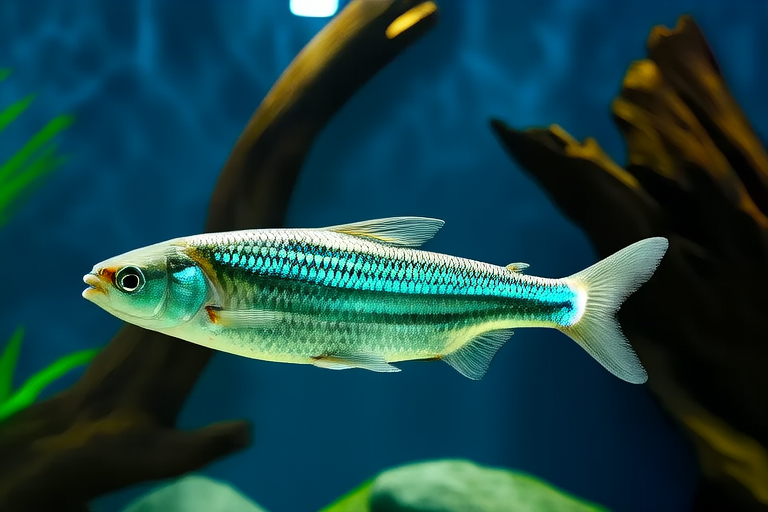The Ultimate Guide to Owning an Exotic Pet: Arowana Care Tips
Welcome to the world of exotic pets! Among the most captivating and unique creatures that can be kept as pets, the Arowana stands out for its striking appearance and graceful swimming patterns. Known as ‘Dragon Fish’ due to their elongated bodies and bony heads, Arowanas are a sight to behold. This guide will provide you with everything you need to know about owning an Arowana, from setting up the perfect aquarium to maintaining its health and well-being.
Setting Up the Perfect Aquarium Environment
Creating the right habitat for your Arowana is crucial for its survival and happiness. Here’s what you need to consider:
Aquarium Size Requirements
Arowanas are large fish that require ample space to swim freely. For a single adult Arowana, a tank of at least 300 gallons is recommended. Juveniles can start in smaller tanks but must be moved to larger ones as they grow. The length of the tank should be at least four times the length of the fish to allow for proper swimming.
Water Parameters
Proper water conditions are vital for your Arowana’s health. Maintain a pH level between 6.8 and 7.8, and keep the temperature stable at around 78 to 84 degrees Fahrenheit. Use a reliable thermometer and heater to monitor and regulate the temperature. Regularly check the ammonia, nitrite, and nitrate levels to ensure they remain within safe limits.
Filtration Systems
Invest in a high-quality filtration system capable of handling the volume of water in your tank. Arowanas produce a lot of waste, so efficient biological, mechanical, and chemical filtration is necessary. Consider a combination filter or multiple filters if needed to maintain optimal water quality.
Diet and Feeding Habits
Arowanas are carnivorous and require a balanced diet to thrive. Here’s how to meet their nutritional needs:
Natural Food Options
In the wild, Arowanas feed on insects, small fish, crustaceans, and even birds. You can offer them live or frozen foods such as feeder fish, shrimp, crickets, and worms. These provide essential nutrients and mimic their natural diet.
Prepared Food Options
Commercially available foods like pellets and sticks designed for large predatory fish are also suitable. Ensure these are high in protein and low in fillers. Rotate between different types of food to prevent dietary deficiencies.
Feeding Schedule
Feed your Arowana two to three times a week, offering as much food as it can consume in five minutes. Overfeeding can lead to obesity and poor water quality, so moderation is key.
Maintaining Water Quality and Performing Regular Maintenance Tasks
Keeping your Arowana’s water clean is essential for its health. Follow these steps:
Water Changes
Perform partial water changes (about 20%) every week. Use a gravel vacuum to remove debris from the substrate and clean the tank decorations during these changes. Always treat new water with a dechlorinator before adding it to the tank.
Cleaning Equipment
Regularly clean all equipment, including filters, heaters, and decorations, to prevent the buildup of harmful bacteria and algae.
Monitoring Water Parameters
Test the water regularly for pH, temperature, and chemical levels. Adjust as necessary to maintain optimal conditions for your Arowana.
Common Health Issues and Preventive Measures
Despite providing the best care, Arowanas can still face health challenges. Here’s how to address them:
Common Health Problems
Common issues include bacterial infections, parasitic infestations, and fin rot. Symptoms may include lethargy, loss of appetite, discoloration, or abnormal behavior.
Preventive Measures
To prevent illnesses, maintain excellent water quality, quarantine new fish, and avoid overcrowding. Regularly inspect your Arowana for signs of distress and consult a veterinarian specializing in exotic pets if you suspect any health issues.
Tips on Handling and Interacting with Your Arowana Safely and Responsibly
While Arowanas are fascinating creatures, they require careful handling:
Safe Handling
Arowanas have strong jaws and sharp teeth, making them potentially dangerous. Avoid handling them unless absolutely necessary. If you must, use a net or a container to move them gently.
Responsible Interaction
Observe your Arowana from outside the tank to enjoy its beauty without disturbing it. Avoid tapping on the glass or making sudden movements that could stress the fish.
Legal Considerations
Before acquiring an Arowana, check local laws regarding exotic pet ownership. Some areas have restrictions or require permits for keeping certain species.
Owning an Arowana is a rewarding experience that comes with great responsibility. By following this guide, you can ensure your pet thrives in a healthy, stimulating environment. Enjoy the unique bond you’ll form with this magnificent creature.
